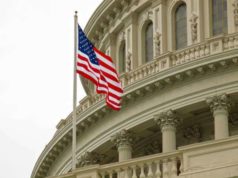
The Six Principles of the Northwest Ordinance: Shaping the Future of American Expansion
The Northwest Ordinance of 1787 stands as a landmark piece of legislation in American history, setting a blueprint for the governance and expansion of the newly formed United States. Within this pivotal document, six principles were established, each playing a crucial role in shaping the nation’s westward expansion and the future development of its territories. In this article, we will delve into these six principles of the Northwest Ordinance and explore their lasting impact on the growth and governance of the United States.
1. Territorial Integrity
The first principle of the Northwest Ordinance emphasized the territorial integrity of the region, specifically the Northwest Territory, which encompassed areas that would become Ohio, Indiana, Illinois, Michigan, Wisconsin, and part of Minnesota. It was a fundamental declaration that the newly acquired territories would remain integral parts of the United States, subject to federal laws and governance.
2. Prohibition of Slavery
One of the most notable provisions of the Northwest Ordinance was the prohibition of slavery in the Northwest Territory. Article VI of the ordinance explicitly declared that “there shall be neither slavery nor involuntary servitude” in the territory. This principle laid the groundwork for the eventual exclusion of slavery from the states carved out of this territory and reflected the growing moral and political divide over the institution of slavery in the United States.
3. Public Education
The Northwest Ordinance emphasized the importance of education in the new territories. Article III of the ordinance reserved section 16 in each township for the support of public schools. This commitment to education contributed to the establishment of a strong public education system in the Northwest Territory and set a precedent for the promotion of education in the rest of the nation.
4. Religious Freedom
Religious freedom was a central principle of the Northwest Ordinance. It guaranteed that the inhabitants of the territory would have the right to practice their religion without discrimination. This commitment to religious liberty was an essential step in recognizing the importance of individual freedoms and laid the groundwork for the First Amendment to the U.S. Constitution.
5. Republican Government
The Northwest Ordinance outlined a form of government for the Northwest Territory based on republican principles. It established a process for the creation of territorial governments and provided for a pathway to statehood once a territory met certain criteria, including having a population of 60,000 free inhabitants. This process of territorial governance and statehood became a model for the organization and admission of future states.
6. Protection of Native American Rights
The Northwest Ordinance also included provisions to protect the rights of Native American tribes in the region. It acknowledged their sovereignty over their land and established a process for purchasing land from them through treaties. While the practical application of these principles often fell short, they represented an early recognition of the need for respectful interactions with Native American nations.
The six principles of the Northwest Ordinance not only guided the development of the Northwest Territory but also served as a template for the expansion of the United States into other territories and regions. They reflected the values of the young nation, emphasizing liberty, education, and governance by the people. Moreover, the prohibition of slavery in the territory and the recognition of Native American rights were important steps toward addressing critical issues that would continue to shape American history.
In conclusion, the Northwest Ordinance of 1787 left an indelible mark on the United States. Its six principles set forth a vision for westward expansion that reflected the nation’s evolving values and aspirations. As the United States expanded across the continent, these principles continued to influence the development of new territories and states, leaving a lasting legacy of governance, freedom, and education.
The Northwest Territory included land that existed outside of the original 13 states, comprised of what is now Ohio, Indiana, Illinois, Michigan, Wisconsin, and Minnesota. Though the Articles of Confederation was founded under the pretense of diminishing the authority that the central government had over the individual states, the central government was given control over the regulation of westward expansion. The Northwest Ordinance gave settlers free reign to colonize the 5 states outlined in the document.
Under the regulations of the Northwest Ordinance, all settlers were entitled to the same freedoms and liberties afforded to citizens of the original 13 states. Located within the text of the Northwest Ordinance was a section entitled “Articles of Compact”, 6 procedural requirements to which settlers were obligated to adhere. They included an outline of processes and regulations, which ensured that the guidelines set forth in the Articles of Confederation were upheld in every territory included in the western expansion effort. Because both the Continental Congress and Thomas Jefferson were in favor of expanding the borders of the United States of America, the Northwest Ordinance was passed in order to persuade, rather than deter, settlers to do so.
In order to retain control of the expansion, only a certain amount of land was allotted to settlers participating in the western expansion effort. The Articles of Confederation allowed the central government to regulate all boundary parameters set forth in the Northwest Ordinance, and as result, the central government was responsible for granting statehood to the territories. The Northwest Ordinance required that once a territory had 5,000 settlers, they would be able to send a non-voting representative to Congress. In addition, once a territory amassed 60,000 settlers they would be entitled to apply for statehood.
The Articles of Compact required that every settlement adhere to the tenets set forth in the Articles of Confederation, which ensured that the liberties afforded to citizens residing in the 13 states would be allowed to all settlers. The six principles of the Articles of Compact stated that:
● All settlers were granted freedom of worship.
● All settlers were both entitled to trial by jury, as well as habeas corpus.
● All settlers were encouraged to establish functional community relations, which included school systems and adequate housing. In addition, settlers were forbidden to do unjust harm onto Native Americans residing in surrounding areas.
● All settlers were to adhere to the Articles of Confederation, and like the citizens of the 13 states, they too were exempt from Government-impost taxes.
● All settlers adhere to the boundaries set forth in the Northwest Ordinance. They were forbidden from expanding past the set parameters.
● Slavery was forbidden in the western territories.
The Northwest Ordinance was one of the few jurisdictions that the Articles of Confederation had granted the central government, and the enforcement of its regulations allowed for a democratic expansion of the United States of America’s border, fueled by liberty and opportunity.

























